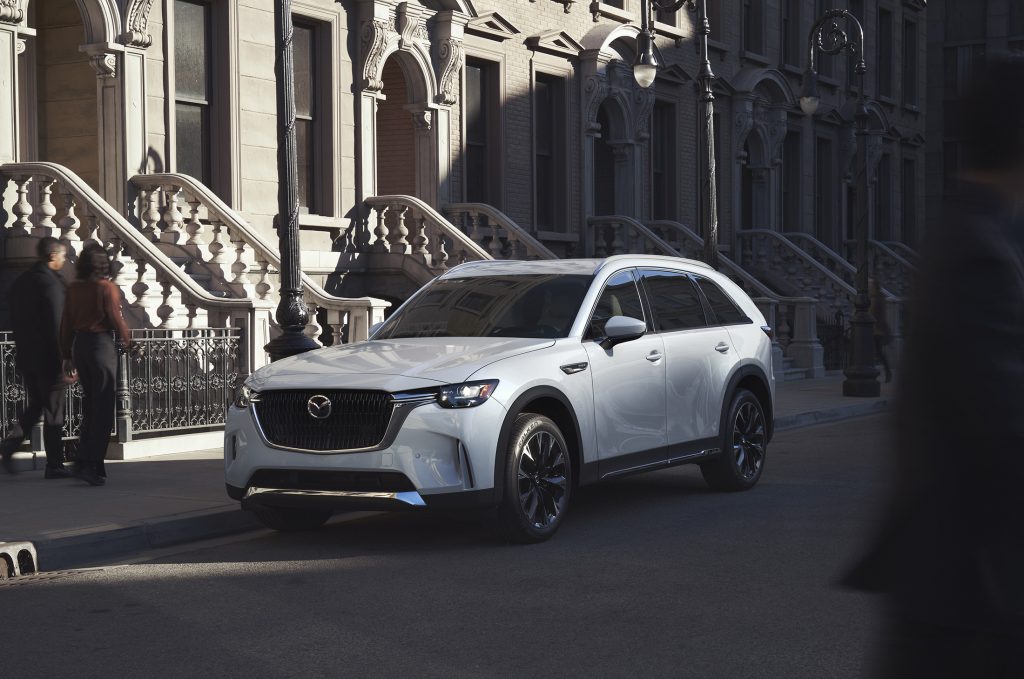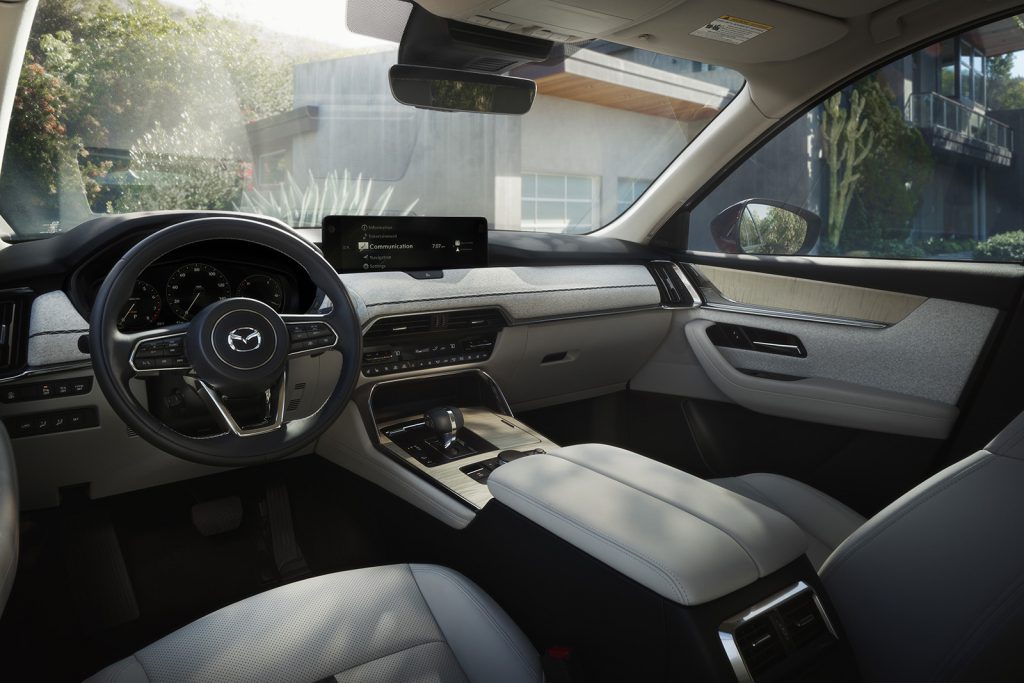Cargazing
By Derek Price
If you want to see how far cars have progressed in the past 30 years, I’ve got a real-life case study this week in my driveway.
My 1994 Mazda Miata — a tiny, two-seat sports car that weighs around 2,300 pounds — was rated for 19 mpg in the city and 25 on the highway when it was new.
Fast-forward 30 years, and the biggest Mazda for sale today — the all-new 2024 CX-90 — weighs more than twice as much as my Miata, makes more than twice the horsepower and feels about five times as big. Yet, in federal testing, it gets better gas mileage than the Miata did in 1994.
The CX-90 is rated 24 mpg in the city and 28 on the highway, both mind-blowing numbers to boring people like me.
Despite being a whole lot bigger and more luxurious than the now-deceased CX-9, God rest its soul, the massive, spacious new three-row crossover burns gas at roughly the same rate economy cars did in the not-so-distant past.
But is it as good as the CX-9? That’s the bigger question to me.

The 2024 CX-90 is considerably bigger than the CX-9 it replaces. This three-row crossover mixes fun-to-drive Mazda DNA with spacious practicality.
For a long time, the CX-9 was a top pick for people who need three rows of seating but also want a close, engaged connection to the pavement. If you didn’t want to spring for a pricey Porsche, Mercedes or BMW crossover, the closest thing you could get to that experience was the Mazda CX-9 with its fun-to-drive magic.
The bad news is that the CX-90 just isn’t as fun as its predecessor, mainly because of its bulkier size. If I had to pick a crossover to fling around a street course for a day — a ridiculous example, but stick with me — I’d pick the CX-9 just because it would make me smile bigger.
The good news is that the CX-90 is tangibly better in every other way, including very likely faster around that imaginary street course. It just doesn’t feel as thrilling, an intangible thing that isn’t going to be high on most buyers’ shopping lists.
Instead, the CX-90 offers what matters to more of today’s SUV shoppers: space, comfort and technology.

Mazda is marching the CX-90 farther upmarket with its luxurious cabin design, including solid construction, supple materials, a quiet driving experience and lots of built-in tech features.
It still drives nicely, with three great power choices built around Mazda’s new 3.3-liter, turbocharged, inline six-cylinder engine.
The base version makes 280 horsepower and 332 pound-feet of torque, more than average in this class and enough to make my tester feel sprightly.
A high-output version is also available that makes 340 horsepower and 369 pound-feet of torque, along with a plug-in hybrid that can drive up to 25 miles on pure electric power before its 323-horsepower gasoline engine kicks in.
Every version of the CX-90 is bigger and more luxurious than the CX-9 was. It’s longer and wider, and the cabin has a supple, solid feeling that will appeal to people cross-shopping luxury brands.
I loved how roomy and downright comfortable my CX-90 tester felt. It’s a great way to spend hours on the highway in quiet, blissful comfort, yet its still feels firm enough in corners to let its Mazda DNA show through.
Not surprisingly, its price has moved upmarket, too. With the base engine, it starts at $37,485 and tops out at $48,900. The upgraded 340-hp engine starts at $49,850 and peaks at $55,950 for the fancy Premium Plus trim level.
At A Glance
What was tested? 2024 Mazda CX-90 3.3 Turbo Premium Plus ($52,950). Options: Premium paint ($595). Price as tested (including $1,375 destination charge): $54,920
Wheelbase: 122.8 in.
Length: 201.6 in.
Width: 84.9 in.
Height: 68.7 in.
Engine: 3.3-liter turbocharged inline six cylinder (280 hp, 332 lbs.-ft.)
Transmission: Eight-speed automatic
Fuel economy: 24 city, 28 highway
Ratings
Style: 9
Performance: 8
Price: 6
Handling: 8
Ride: 8
Comfort: 8
Quality: 9
Overall: 9
Why buy it?
All-new for 2024, the CX-90 is powerful, spacious and upscale enough to compete with luxury brands.
